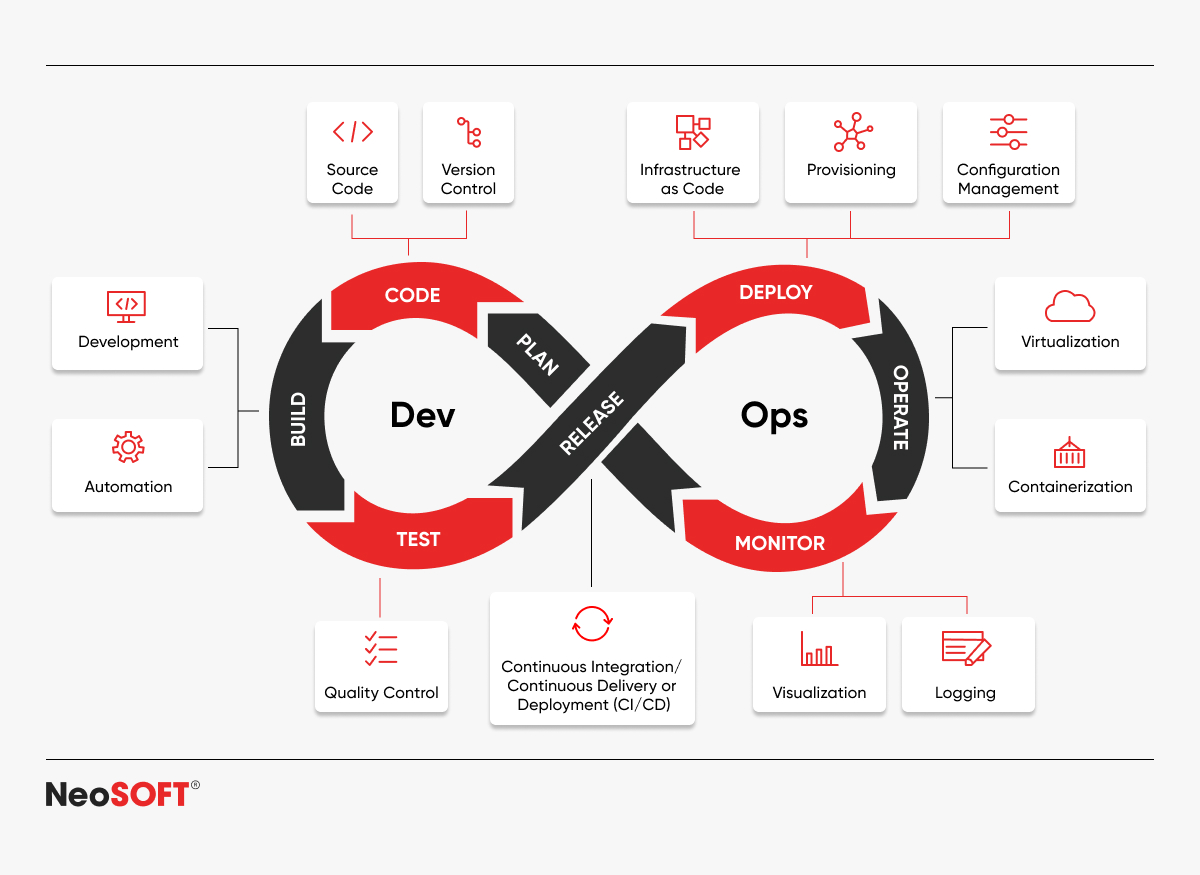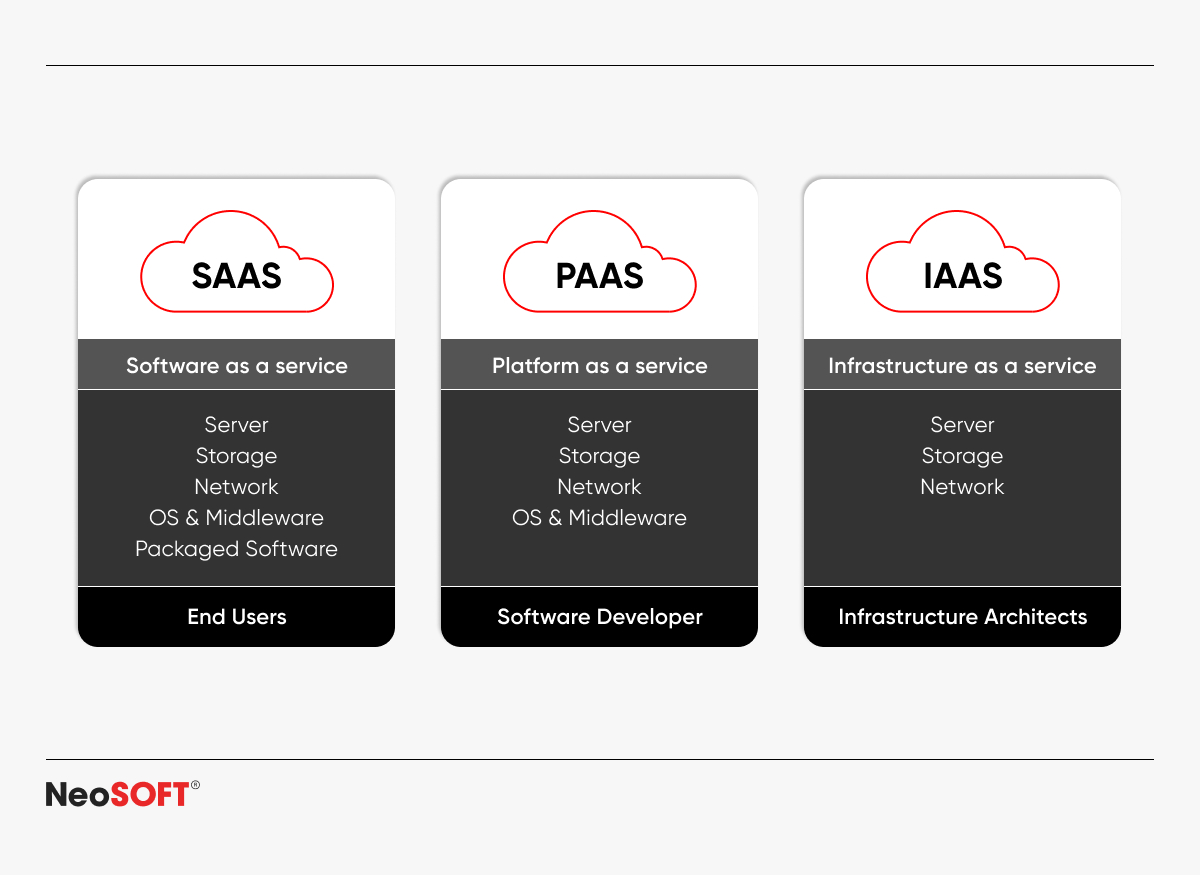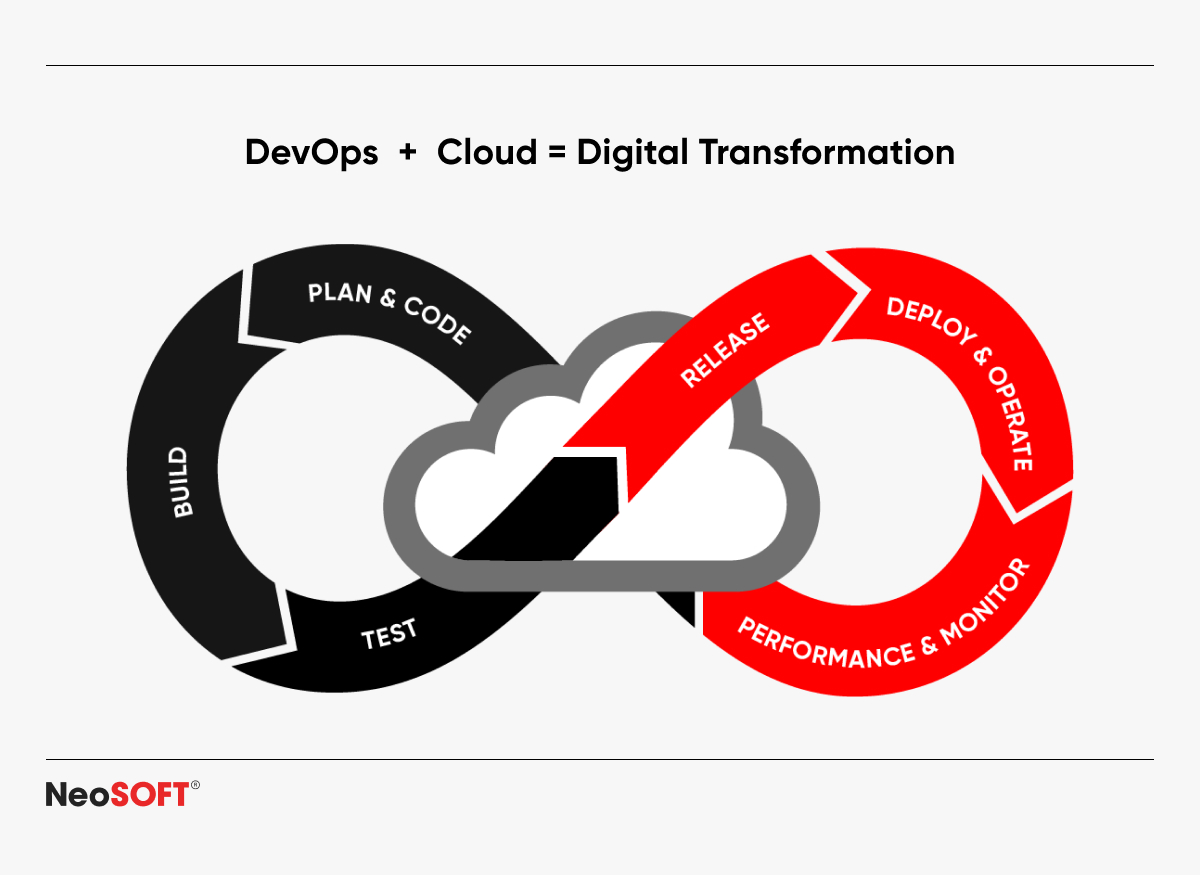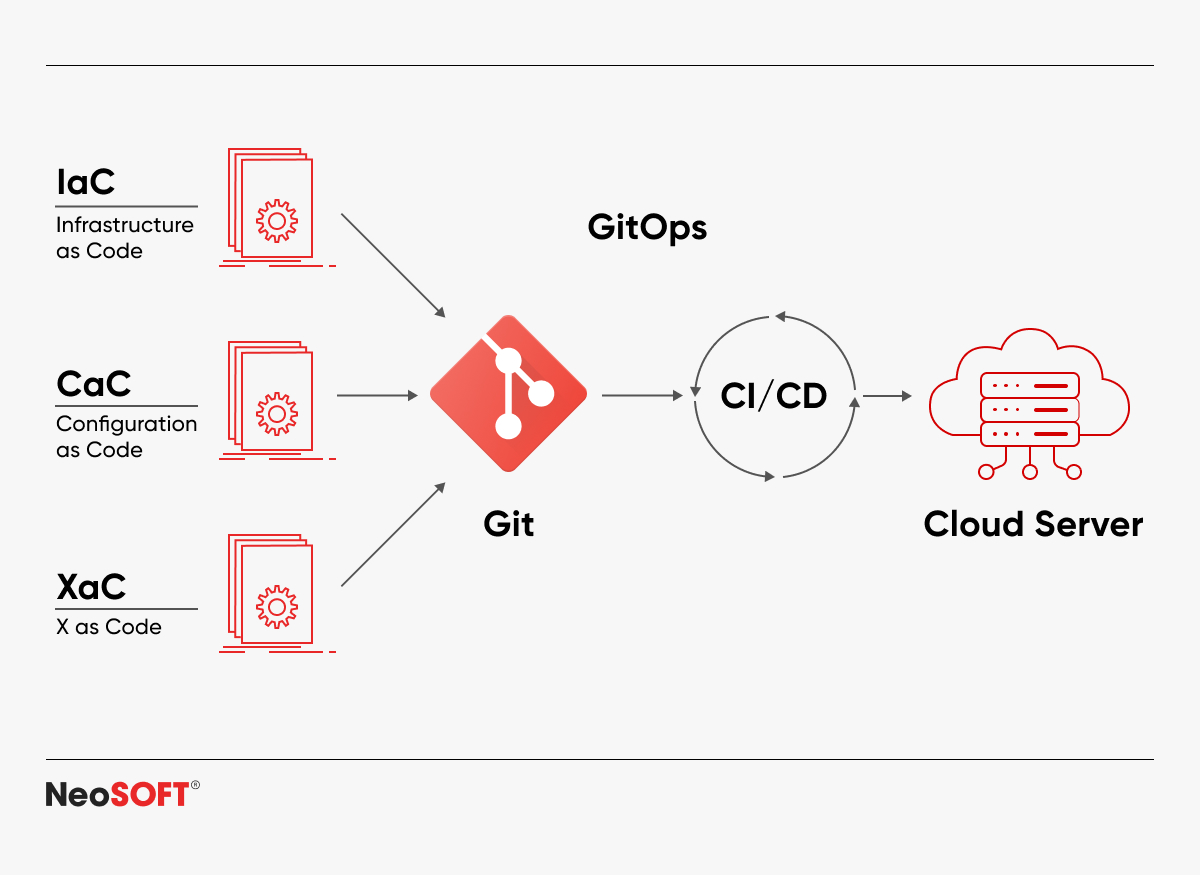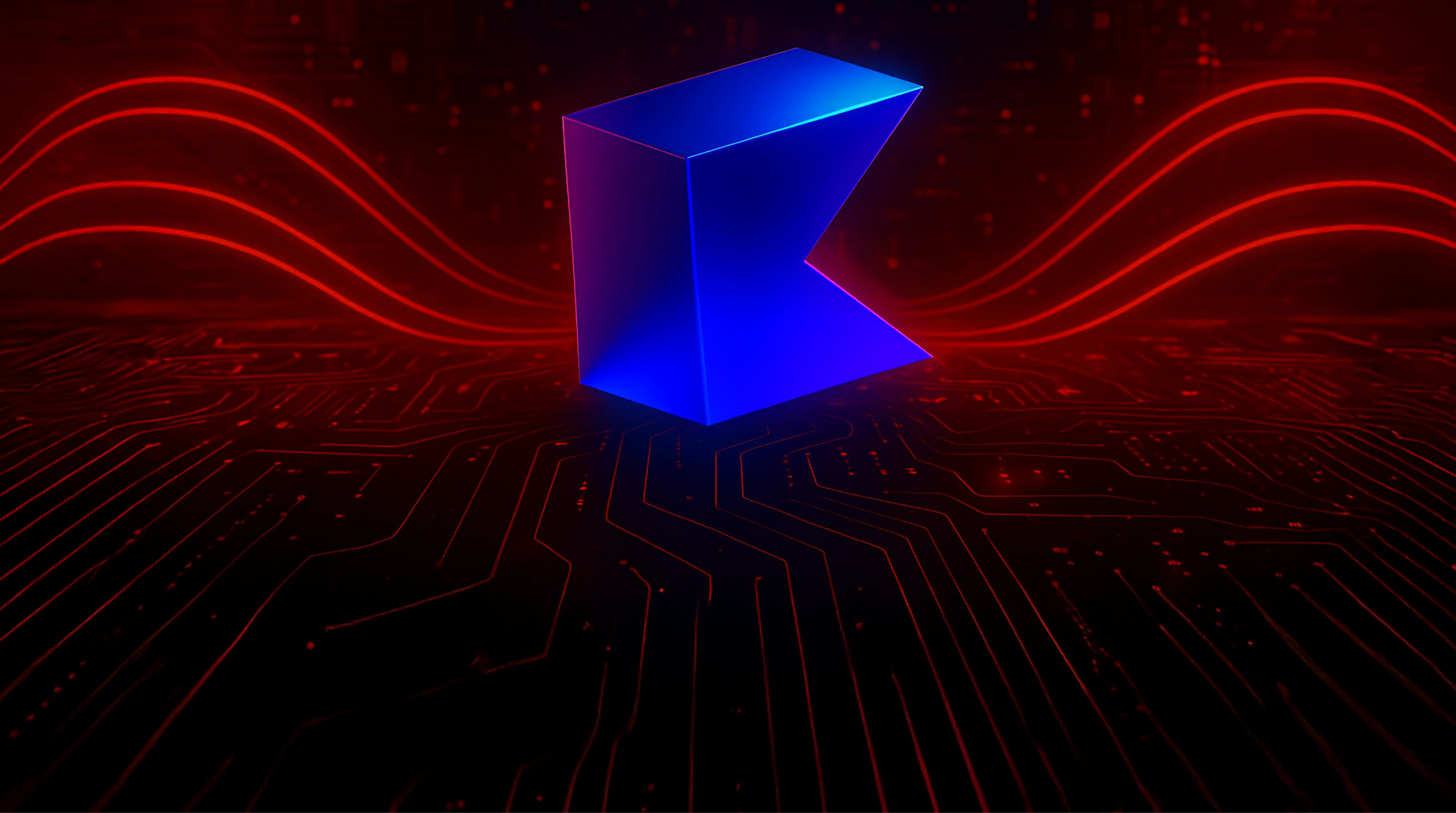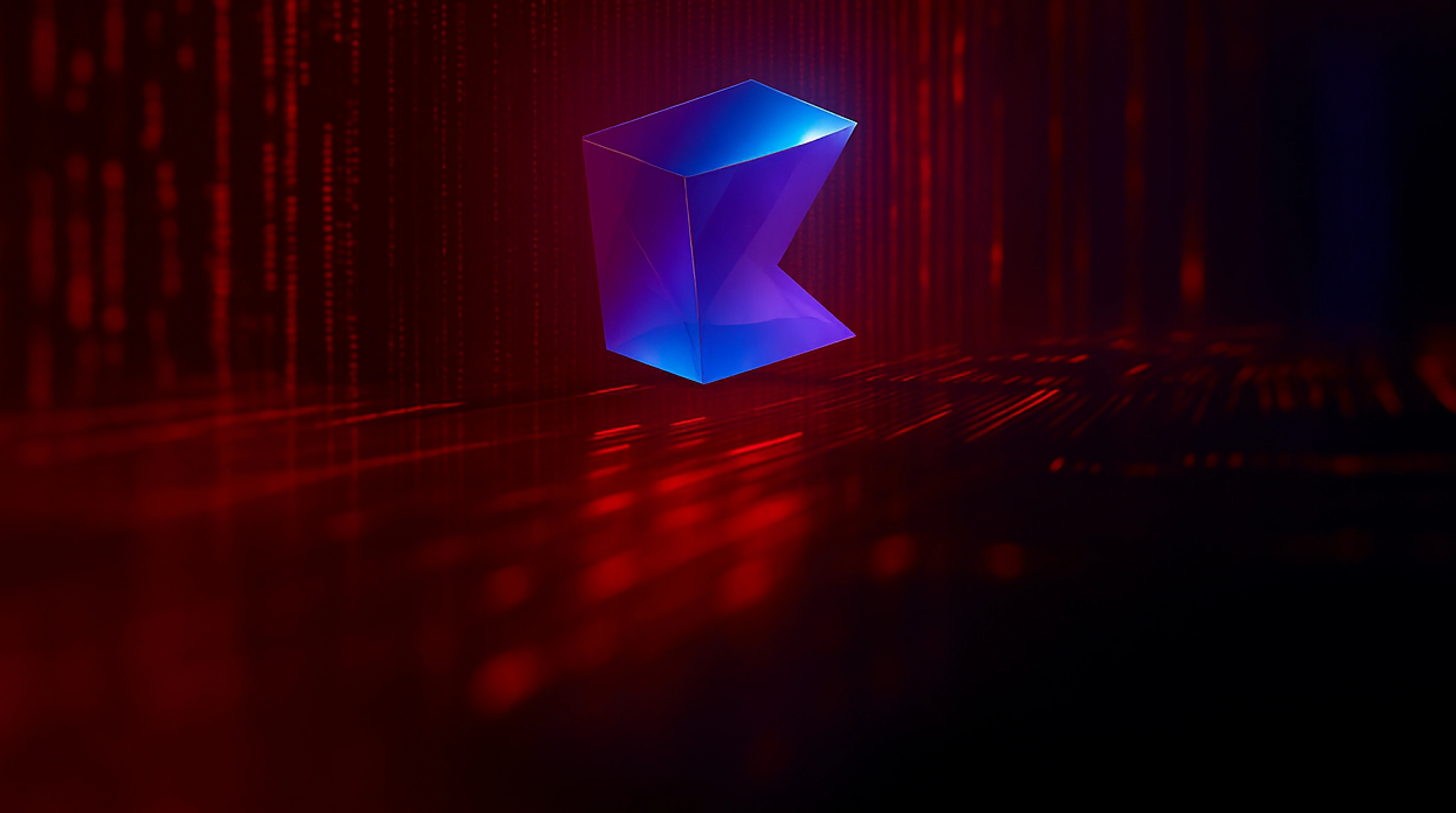The Dynamic Intersection of DevOps and Cloud Computing
February 20, 2024
Introduction to DevOps and Cloud Computing
What is DevOps?
A portmanteau of “development” and “operations,” DevOps refers to a set of practices, tools, and cultural philosophies that aim to improve collaboration and communication between the software development (Dev) and IT operations (Ops) teams. The primary goal of DevOps is to streamline and automate the software delivery process, fostering a culture of continuous integration and continuous delivery (CI/CD) and constant improvement. DevOps breaks down traditional barriers between development and operations, encouraging cross-functional teams and shared responsibilities. This coactive approach seeks to eliminate silos and promote a seamless and efficient software development lifecycle, from code creation to deployment and maintenance.
Key aspects of DevOps
1. Collaboration:
- Cross-functional Teams: DevOps promotes cross-functional teams with members from development, operations, and QA for shared responsibility and common goals.
- Communication: Effective communication is essential and is facilitated through consistent meetings, collaborative platforms, and shared documentation.
2. Automation:
- Build Automation: DevOps uses tools to compile source code into executables, ensuring uniformity and reducing manual errors.
- Test Automation: Automated testing validates code against requirements, identifying and catching bugs early in the development process.
- Deployment Automation: Automated processes ensure consistent and reliable deployment across environments.
3. Continuous Integration (CI) and Continuous Deployment (CD):
- CI Practices: Developers integrate code changes into a shared repository, triggering automated builds and tests for early issue identification.
- CD Practices: Continuous Deployment automates code deployment to production after successful testing, ensuring frequent and dependable releases.
4. Infrastructure as Code (IaC):
- Definition: IaC manages infrastructure using machine-readable scripts, promoting consistency, version control, and scalable configurations.
5. Monitoring and Feedback:
- Continuous Monitoring: DevOps carries out monitoring for rapid issue detection and proactive responses.
- Feedback Loops: Establishing feedback loops between development and operations teams ensures consistent improvement.
6. Cultural Shift:
- Shared Responsibility: DevOps shifts from siloed responsibilities to shared ownership of the software delivery process.
- Learning Culture: Embracing mistakes and failures as opportunities to learn and improve is crucial for continuous growth in DevOps.
Thus, DevOps is not a specific tool or technology but rather a holistic approach to software development and IT operations. Organizations that adopt DevOps practices aim to deliver high-quality software, efficiency, and better responsiveness to ever-changing business requirements.
What is Cloud Computing?
Cloud computing is a transformative technology paradigm that fundamentally changes how cloud services are delivered, accessed, and managed. It involves providing a diverse range of computing resources over the internet, allowing users to access and make use of these resources on demand. Instead of organizations owning and maintaining physical hardware and infrastructure, they can leverage cloud providers’ services, only paying for what they use on a subscription or pay-as-you-go basis.
Cloud computing revolutionizes how resources are sourced, accessed, and managed. It provides a flexible, scalable, cost-effective solution for organizations to meet IT needs and drive innovation.
Key aspects of Cloud Computing
1. Service Models:
- IaaS (Infrastructure as a Service): Provides virtualized computing resources over the internet on a pay-as-you-go basis, including virtual machines, storage, and networking components.
- PaaS (Platform as a Service): Offers a comprehensive platform with computing infrastructure, development tools, and services, allowing developers to focus on application building without managing the underlying infrastructure.
- SaaS (Software as a Service): Delivers software applications over the internet, granting users access without the need to control or manage the supporting infrastructure; examples include email services, office tools, and CRM systems.
2. Deployment Models:
- Public Cloud: Resources shared among multiple customers on third-party infrastructure managed by providers like AWS, Azure, and GCP.
- Private Cloud: Dedicated infrastructure for a single organization, offering increased control and customization, albeit with higher upfront costs.
- Hybrid Cloud: Combines public and private clouds, enabling data and application sharing for enhanced flexibility and optimization.
- Multi-Cloud: Involves leveraging services from multiple cloud providers, enhancing redundancy, mitigating vendor lock-in, and accessing specialized services.
3. Essential Characteristics:
- On-Demand Self-Service: Users can independently provision and manage computing resources without human intervention.
- Broad Network Access: Cloud services are accessible over the network, providing connectivity via various devices.
- Resource Pooling: Resources are dynamically assigned based on demand, serving multiple customers.
- Rapid Elasticity: Resources are easily scaled up or down to meet changing demand, ensuring flexibility and cost efficiency.
- Measured Service: Cloud resources are metered with users paying for specific consumed resources.
4. Benefits:
- Cost Savings: Reduced capital expenditures through a pay-as-you-go model, allowing users to pay only for consumed resources.
- Scalability: Easy resource scaling to accommodate changes in demand, providing agility and responsiveness.
- Flexibility: Users can choose services and configurations meeting specific needs, ensuring customization.
- Global Accessibility: Cloud services are accessible worldwide with an internet connection, facilitating collaboration and remote work.
- Innovation and Time-to-Market: Enables rapid deployment and iteration of applications, reducing time-to-market for new products and services.
Cloud computing also involves different deployment models, including public cloud (resources shared among multiple customers), private cloud (dedicated resources for a single organization), hybrid cloud (combination of public and private clouds), and multi-cloud (using services from multiple cloud providers). Popular cloud service providers include Amazon Web Services (AWS), Microsoft Azure, and Google Cloud Platform (GCP). Organizations often leverage cloud computing to achieve cost savings, scalability, flexibility, and the ability to quickly deploy and manage applications and services.
How do DevOps and Cloud Computing work together?
DevOps and cloud computing are complementary, forming a synergy that enhances organizational software development and deployment efficiency. They intersect notably in Infrastructure as Code (IaC), where cloud platforms provide an ideal environment for teams to define, version, and automate infrastructure resources.
Scalability and elasticity are key benefits, with cloud platforms offering on-demand resources easily scaled based on application requirements. This agility allows quick responses to changes in workload, improving overall performance and user experience.
Continuous Integration and Continuous Delivery (CI/CD) in DevOps align seamlessly with cloud computing capabilities. Automated deployment, container orchestration, and serverless computing features provided by cloud services facilitate efficient CI/CD pipelines, resulting in faster and more reliable software releases.
Collaboration and communication, core tenets of DevOps, are further facilitated by cloud computing platforms. These environments offer centralized platforms for development and operations teams to collaborate seamlessly, enhancing collaboration and enabling cohesive work.
Resource efficiency is another area of alignment. Cloud computing’s pay-as-you-go model and DevOps practices like automated scaling and resource optimization promote efficient resource utilization.
Monitoring and analytics capabilities provided by cloud platforms enhance the continuous improvement cycle advocated by DevOps. Real-time insights into application performance enable quick issue identification and resolution, contributing to improved system reliability.
Security and compliance are effectively addressed by combining DevOps and cloud computing. Cloud providers invest heavily in security measures, and DevOps practices integrate security into the development and deployment pipeline, ensuring a secure and compliant infrastructure.
In conclusion, the synergy between DevOps and cloud computing accelerates digital transformation by leveraging the inherent flexibility, automation, and collaboration features. This holistic approach empowers organizations to build, test, deploy, and scale applications more efficiently, fostering a culture of continuous improvement and innovation.
What is the future of DevOps and Cloud Computing integrations?
The future of integrating DevOps and Cloud Computing is characterized by ongoing evolution, deeper integration, and the adoption of emerging technologies. One significant trend is the increased emphasis on automation across the software delivery lifecycle. DevOps practices will prioritize end-to-end automation, streamlining processes, and increasing efficiency.
The growing adoption of the GitOps model is another noteworthy shift. This involves managing infrastructure and application deployment through version-controlled repositories, enhancing collaboration, traceability, and reproducibility. Security considerations will seamlessly integrate into the DevOps pipeline, reflecting a DevSecOps approach with embedded security practices and tools.
The rise of serverless architectures will continue, allowing organizations to focus on code without managing the underlying infrastructure. Integrating DevOps practices into edge computing will become prominent, enabling efficient application deployment closer to end-users. Multi-cloud strategies will see increased adoption, leveraging services from different cloud providers for enhanced redundancy, risk mitigation, and cost optimization.
Containerization, particularly with technologies like Docker, will remain a standard for packaging and deploying applications. Orchestration tools like Kubernetes will persist in managing containerized applications at scale, facilitating efficient resource utilization and deployment. Advanced monitoring and logging tools will provide deeper insights into application and infrastructure performance, emphasizing observability.
Collaboration tools supporting advanced communication and coordination among cross-functional teams will continue to develop. The cultural shift promoted by DevOps, fostering a collaborative, learning-oriented culture within organizations, will remain a key focus. In essence, the future of DevOps and Cloud Computing integration involves continuous adaptation to meet the evolving demands of modern software development and infrastructure management, enabling organizations to deliver software faster, securely, and with increased flexibility.










